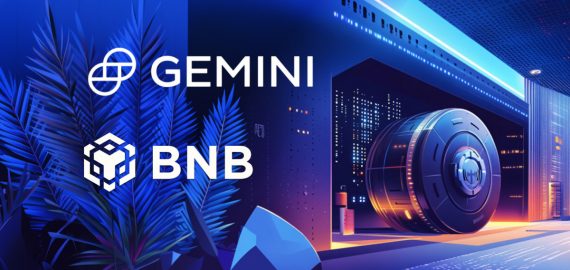Exploring Liquidity Bottlenecks In Meme Perpetual Contracts Market: Analysis Of Orderly Network, dYdX, And Injective


In Brief
The rise of meme perpetual contracts has seen substantial growth over the past year, but challenges remain, particularly around liquidity provision and interoperability.

The rise of meme perpetual contracts became almost inevitable as tokens like DOGE and PEPE began attracting considerable liquidity. These contracts, which allow traders to speculate on prices without expiration dates, have broadened the appeal of decentralized finance (DeFi). While meme derivatives have seen substantial growth over the past year, challenges remain, particularly around liquidity provision and interoperability.
Despite the growing interest in meme perpetual contracts, trading volumes remain heavily skewed toward centralized exchanges (CEXs). This is due to their large user bases, deep liquidity, and user-friendly interfaces. As a result, there is a noticeable gap between centralized and decentralized platforms, with on-chain liquidity for meme perpetual contracts still being relatively limited.
The fragmentation of liquidity across different networks adds another layer of complexity, making efficient price discovery and trade execution more difficult. To address these challenges, several leading DeFi platforms are actively exploring solutions, including technological and market structure innovations.
Liquidity Fragmentation: Orderly Network, dYdX, And Injective’s Approach To The Issue
Orderly Network has established itself as a leader in DeFi with its cross-chain perpetual futures orderbook, integrating both Ethereum Virtual Machine (EVM) and non-EVM orders. Recently, meme perpetual contracts have gained traction, allowing users to trade tokens like CHILLGUY and SPX across more than 30 connected decentralized exchanges (DEXs).
By prioritizing liquidity across all chains, Orderly has played a key role in addressing the fragmentation of liquidity pools in the industry. The platform is deployed on six major networks and has achieved over $65 billion in cumulative trading volume, positioning itself as a notable player in the DeFi space.
Meanwhile, dYdX has adopted a different approach with its dYdX Unlimited platform. By introducing Instant Market Listings for liquidity provisioning, it has expanded market access. Additionally, the platform’s MegaVault global liquidity pool, paired with enhanced affiliate and token reward programs, has contributed to an increase in both trading volume and total value locked (TVL) since its launch in November.
dYdX, a major player in the cryptocurrency perpetuals market, has also taken a step forward by offering instant listings for more than 800 trading pairs, addressing long-standing liquidity challenges within the DeFi sector.
Injective provides an alternative solution through its unified liquidity layer and extensive on-chain orderbook. Built on Ethereum and the Cosmos SDK, this Layer 1 blockchain brings institutional-grade liquidity to DeFi. Its cross-chain capabilities in margin trading and derivatives offer new opportunities for liquidity provisioning across multiple blockchains.
With the support of a global network of developers, validators, builders, institutions, and partners, Injective’s ecosystem has recently experienced a surge in memecoin projects. This is partly due to the introduction of a bridge that enables seamless transfers of meme tokens between Solana and Injective, further expanding the platform’s reach.
Intent-Based Solutions: A Key Innovation In Overcoming Liquidity Challenges For Cross-Chain Transactions
Intent-based solutions have emerged as a promising method for tackling liquidity challenges, especially in cross-chain transactions. These solutions allow users to express their intent, which then determines the desired end state of a transaction. Once the intent is specified, a network of “Solvers” competes to fulfill the user’s request as quickly and cost-effectively as possible.
By eliminating the need for users to manually transfer funds, connect to wallets, or interact with bridges and DEXs, intent-based solutions streamline the process. Additionally, they help bridge liquidity gaps between different networks by efficiently routing orders to available liquidity pools. The competition between Solvers further optimizes transaction efficiency.
The future growth of meme perpetual contracts will largely depend on how effectively platforms address these liquidity challenges, allowing them to better compete with centralized exchanges (CEXs). If these challenges can be overcome, the combination of cross-chain functionality and new intent-based architectures holds potential for the success of meme perpetual contracts in the future.
Disclaimer
In line with the Trust Project guidelines, please note that the information provided on this page is not intended to be and should not be interpreted as legal, tax, investment, financial, or any other form of advice. It is important to only invest what you can afford to lose and to seek independent financial advice if you have any doubts. For further information, we suggest referring to the terms and conditions as well as the help and support pages provided by the issuer or advertiser. MetaversePost is committed to accurate, unbiased reporting, but market conditions are subject to change without notice.
About The Author
Alisa, a dedicated journalist at the MPost, specializes in cryptocurrency, zero-knowledge proofs, investments, and the expansive realm of Web3. With a keen eye for emerging trends and technologies, she delivers comprehensive coverage to inform and engage readers in the ever-evolving landscape of digital finance.
More articles

Alisa, a dedicated journalist at the MPost, specializes in cryptocurrency, zero-knowledge proofs, investments, and the expansive realm of Web3. With a keen eye for emerging trends and technologies, she delivers comprehensive coverage to inform and engage readers in the ever-evolving landscape of digital finance.


















































